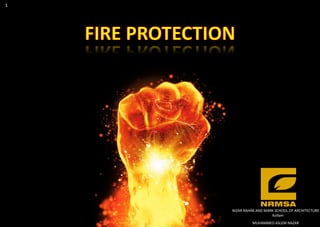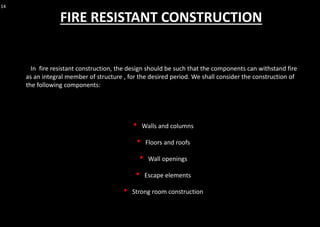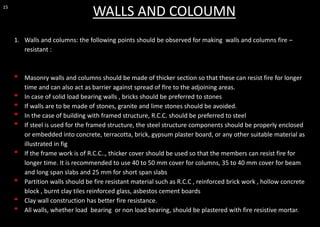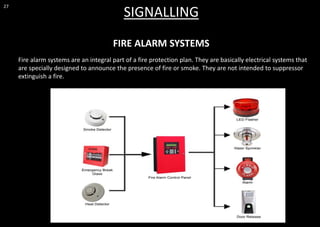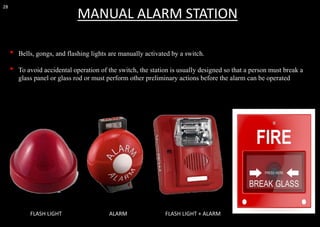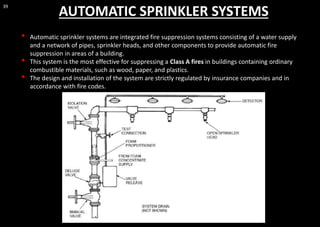Muhammed Aslem Nazar presents a document on fire protection in buildings. The document covers several topics:
1) Classification of fires and construction hazards. Fires are classified based on their fuel source and hazards are classified based on fire load, use/occupancy, and type of construction.
2) Planning for fire protection which includes detection, signaling, and suppression. Detection methods include smoke detectors, flame detectors, and thermal detectors.
3) Fire safety design considerations like fire-resistant construction, means of egress, and coordination with mechanical/electrical systems. Fire resistant components include walls, floors, openings and escape elements.
